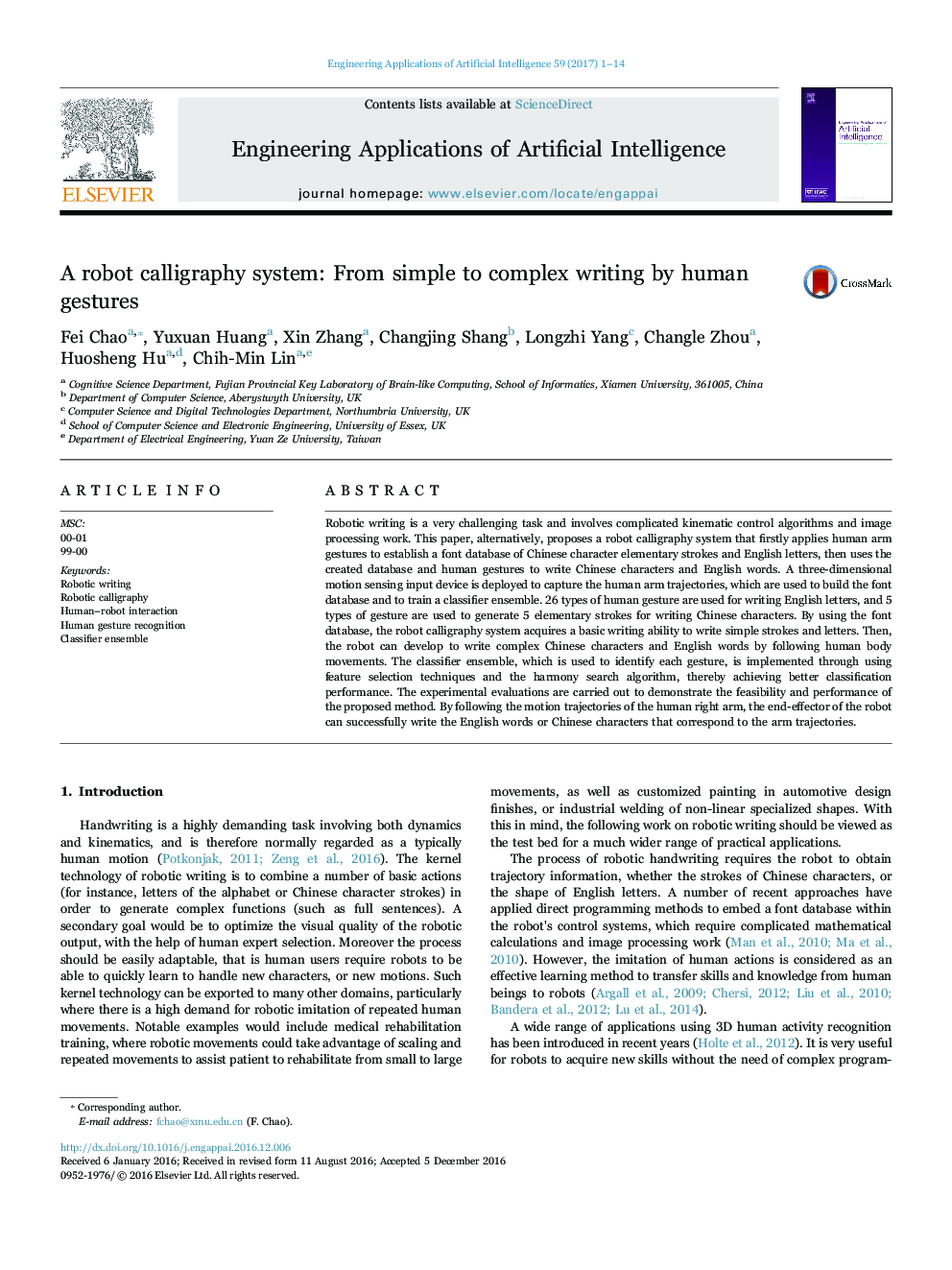| Article ID | Journal | Published Year | Pages | File Type |
|---|---|---|---|---|
| 4942799 | Engineering Applications of Artificial Intelligence | 2017 | 14 Pages |
Abstract
Robotic writing is a very challenging task and involves complicated kinematic control algorithms and image processing work. This paper, alternatively, proposes a robot calligraphy system that firstly applies human arm gestures to establish a font database of Chinese character elementary strokes and English letters, then uses the created database and human gestures to write Chinese characters and English words. A three-dimensional motion sensing input device is deployed to capture the human arm trajectories, which are used to build the font database and to train a classifier ensemble. 26 types of human gesture are used for writing English letters, and 5 types of gesture are used to generate 5 elementary strokes for writing Chinese characters. By using the font database, the robot calligraphy system acquires a basic writing ability to write simple strokes and letters. Then, the robot can develop to write complex Chinese characters and English words by following human body movements. The classifier ensemble, which is used to identify each gesture, is implemented through using feature selection techniques and the harmony search algorithm, thereby achieving better classification performance. The experimental evaluations are carried out to demonstrate the feasibility and performance of the proposed method. By following the motion trajectories of the human right arm, the end-effector of the robot can successfully write the English words or Chinese characters that correspond to the arm trajectories.
Related Topics
Physical Sciences and Engineering
Computer Science
Artificial Intelligence
Authors
Fei Chao, Yuxuan Huang, Xin Zhang, Changjing Shang, Longzhi Yang, Changle Zhou, Huosheng Hu, Chih-Min Lin,
